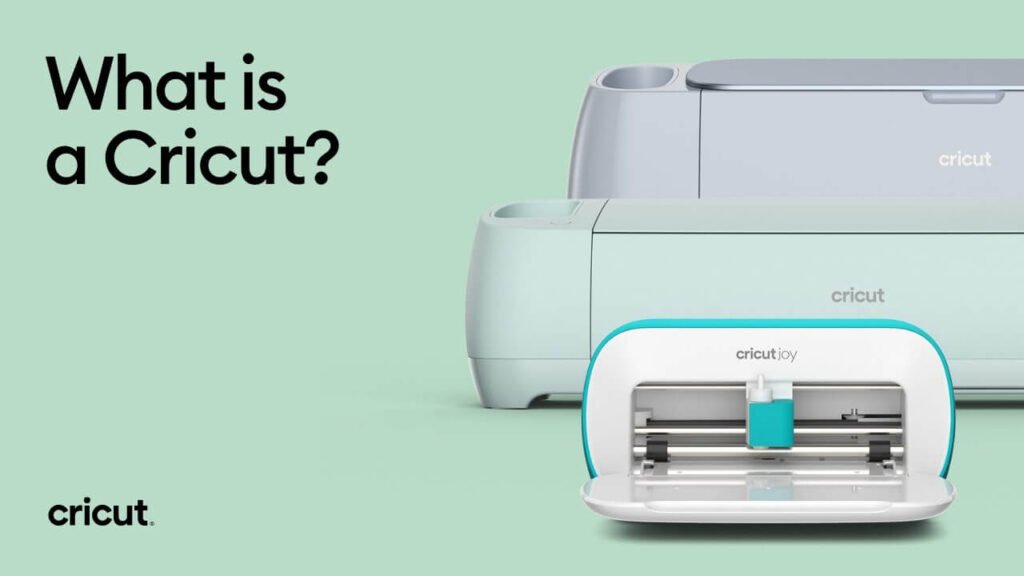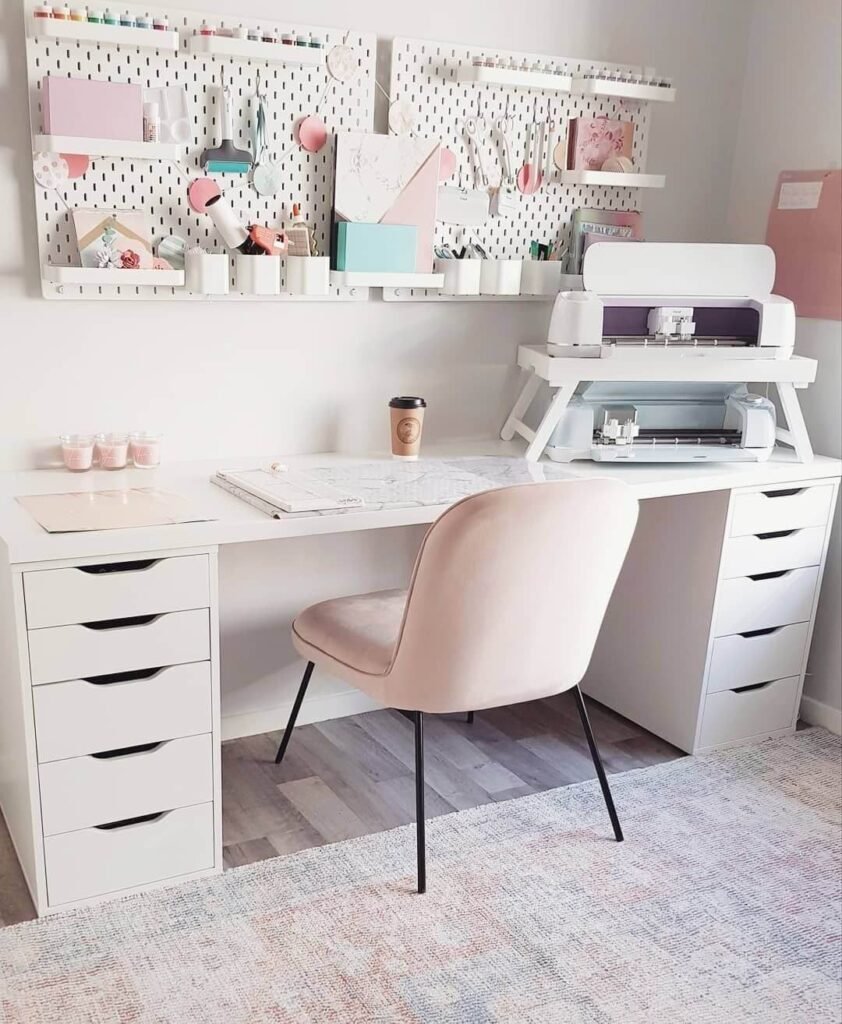Starting a business from home has never been easier, thanks to the versatility of Cricut machines. Whether you’re looking to make a side income or launch a full-time venture, a Cricut business offers endless opportunities for creativity and profit. In this guide, we’ll walk you through the steps to start a successful Cricut business from the comfort of your home.

Understanding the Cricut Machine
Before diving into the business aspects, it’s essential to understand what a Cricut machine is and what it can do. Cricut machines are versatile cutting tools that can cut a wide variety of materials, including vinyl, paper, fabric, leather, and more. These machines are perfect for creating custom designs, which makes them ideal for starting a home-based business.

Types of Cricut Machines
There are several models of Cricut machines available, each with different features and capabilities:
- Cricut Maker: The most versatile machine, capable of cutting hundreds of materials, from delicate fabrics to thicker materials like balsa wood and leather.
- Cricut Explore Air 2: A great all-rounder, perfect for beginners and intermediate crafters, suitable for cutting a wide range of materials.
- Cricut Joy: A compact and portable machine ideal for quick and simple projects, perfect for making cards, labels, and small crafts.
Choosing Your Niche
To build a successful Cricut business, it’s crucial to choose a niche that aligns with your skills and interests. Here are a few popular niches to consider:
Personalized Gifts
Create custom gifts for special occasions such as weddings, birthdays, and holidays. Products can include personalized mugs, t-shirts, tote bags, and more.
Home Decor
Design and sell home decor items like wall decals, wooden signs, pillows, and seasonal decorations. This niche has a broad appeal and allows for a lot of creativity.
Party Supplies
Offer custom party supplies, including banners, cake toppers, invitations, and party favors. Specializing in themed party supplies can attract a loyal customer base.
Apparel and Accessories
Create custom apparel and accessories such as t-shirts, hats, bags, and jewelry. This niche allows for endless possibilities with unique designs and personalization.
Craft Kits and Supplies
Sell DIY craft kits and supplies to other crafters. This can include pre-cut vinyl decals, card-making kits, or sewing patterns.

Setting Up Your Workspace
A well-organized workspace is essential for running a successful Cricut business from home. Here are some tips to set up your craft room or area:
Essential Tools and Supplies
- Cricut Machine: Choose the model that best fits your needs.
- Materials: Stock up on vinyl, paper, fabric, transfer tape, and other materials you’ll need for your projects.
- Tools: Ensure you have essential tools like weeding tools, cutting mats, scissors, and rulers.
- Storage Solutions: Invest in storage solutions to keep your materials and tools organized and easily accessible.
Designing Your Space
- Work Surface: Set up a sturdy table or desk where you can work on your projects.
- Lighting: Ensure your workspace is well-lit to avoid eye strain and mistakes.
- Ergonomics: Consider the ergonomics of your setup to ensure comfort during long crafting sessions.
Creating Your Products
Now that you have your niche and workspace set up, it’s time to start creating your products. Here are some tips to help you create high-quality items:
Design Software
Use design software like Cricut Design Space to create your designs. This software is user-friendly and offers a range of tools to help you bring your ideas to life.
Sourcing Materials
Source high-quality materials that are appropriate for your projects. Look for suppliers that offer bulk discounts to save on costs.
Quality Control
Implement quality control measures to ensure your products meet high standards. Check for any imperfections or errors before shipping your items to customers.
Marketing Your Cricut Business
Effective marketing is key to attracting customers and growing your Cricut business. Here are some strategies to help you promote your business:
Social Media
Utilize social media platforms like Instagram, Facebook, and Pinterest to showcase your products. Post high-quality photos, engage with your audience, and use relevant hashtags to increase visibility.
Online Marketplaces
Sell your products on online marketplaces like Etsy, Amazon Handmade, and eBay. These platforms have a large customer base and can help you reach a wider audience.
Building a Website
Create a professional website to showcase your products and provide a platform for direct sales. Use e-commerce tools like Shopify or WooCommerce to set up an online store.
Networking
Network with other crafters and small business owners to exchange ideas and gain support. Join online forums, attend craft fairs, and participate in local events to build your network.
Pricing Your Products
Pricing your products correctly is essential to ensure profitability. Here are some tips to help you determine the right price for your items:
Calculate Costs
Calculate the total cost of materials, labor, and overhead for each product. Be sure to include shipping and packaging costs.
Research Competitors
Research competitors to see what similar products are selling for. This can give you a benchmark for setting your prices.
Determine Profit Margin
Decide on a profit margin that allows you to make a reasonable profit while remaining competitive. A common approach is to mark up your costs by 2-3 times.
Managing Orders and Shipping
Efficient order and shipping management are crucial for customer satisfaction. Here are some tips to streamline the process:
Order Management
Use an order management system to keep track of orders, inventory, and customer information. This can help you stay organized and fulfill orders promptly.
Shipping Solutions
Choose reliable shipping solutions that offer tracking and insurance. Consider offering multiple shipping options to meet different customer needs.
Packaging
Invest in high-quality packaging to protect your products during shipping. Personalized packaging can also enhance the unboxing experience for your customers.
Scaling Your Business
As your business grows, you may want to consider scaling up to increase revenue and reach more customers. Here are some strategies to help you scale your Cricut business:
Outsourcing
Consider outsourcing certain tasks, such as production, shipping, or marketing, to free up your time and focus on growing your business.
Expanding Product Line
Expand your product line to offer new and innovative items. This can help you attract new customers and increase sales.
Wholesale Opportunities
Explore wholesale opportunities to sell your products in bulk to retailers. This can provide a steady stream of income and increase your brand visibility.
Conclusion
Starting a Cricut business from home is a rewarding and profitable venture. By following these steps and staying committed to your craft, you can turn your passion into a successful business. Remember, the key to success is creativity, quality, and effective marketing. So, get started today and watch your Cricut business flourish!







